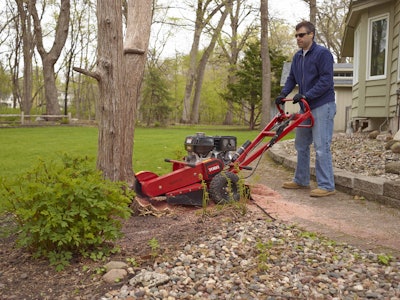
Stump Grinders are a pivotal piece for tree care professional and can come in handy for landscapers. When removing a stump or multiple stumps in a residential area, crews can be faced with tight locations where they’re inhibited by buildings or backyard hardscaping, which makes removing the stump a difficult process.
The following are insights from Josh Beddow at The Toro Company about some of the different factors that crew members can face when removing stumps, and some tips for those who may not have as much experience or are renting a grinder.
The Difference in Grinders
One of the conventionally used grinders is a Handlebar Stump Grinder. They are the most commonly seen model in rental stores. Another conventionally used model is the tracked walk-behind stump grinder, which in the example of Toro utilizes the same concept as Toro's walk-behind trenchers. Both are operator-friendly.
With the Handlebar Stump Grinder, you use the handle to move the cutting wheel back and forth. The operator provides the back and forth sweep action, compared to tracked stump grinders where the operator uses the controls to move the cutting wheel.
With Track Stump Grinders, you just stand behind it and use the controls. Toro track stump grinders have an Intelli-Sweep feature, which will actually adjust the sweep speed, so the speed at which you’re moving the cutting wheel across the stump is based on how much load is being applied to the wheel. So if it feels the wheel slowing down because your depth is putting too much resistance on the wheel, it will actually slow down the sweep speed. So it kind of automatically adjusts for the operator to maintain the cutting wheel performance.
The Handlebar Stump Grinders are going to be a smaller width, which allows you to get in and out. But the Track Stump Grinders have a width of 34 inches so they’re still fairly compact.
The choice between these two depends on how many stumps you’re doing and the size of the stumps. Both are pretty conducive and designed for use in residential applications. For example, if you had a couple small-diameter stumps, you might go with the Handlebar Stump Grinder because it’s just easier to transport; you can put it into the back of a pickup truck and it is 110 pounds vs. the Track Stump Grinders. You need a separate trailing unit to move Track Stump Grinders around.
Read next: The Importance of Stump Grinder Safety
Types of Stumps
Age will come into play in terms of the hardness of the stump. So if you have a stump that is rotting and decaying, it tends to be softer. In that case, either the Track or the Handlebar Stump Grinders can cut through and make good time in those conditions. So it’s a function of size, hardness and number of stumps.
One consideration for choosing the Handlebar Stump Grinder as opposed to one of the larger Track Stump Grinders is that the Handlebar will pivot on its wheels so it can’t reach higher stumps. So if the stump was cut off more than 14 inches above grade, you would require a different stump grinder. If you have a larger tree with a stump that was cut off much higher, that would require you to use a Track Stump Grinder because it can cut stumps up to 35 inches, because the cutting head is on a separate boom.
Residential applications are actually another reason for the track design on the Track Stump Grinders because tracks better distribute the weight of the machine. So the ground pressure is much less and you don’t have to worry about ruts or creating turn marks in people’s yards.
Read next: Stump Cutter Rental and Buying Tips
Tips for Using Stump Grinders
- When working around buildings, keep in mind that Stump Grinders can throw chips. If you’re working close to a building or other objects, you may want to protect or guard those in some way.
- Wear protective gear to protect from flying debris.
- Evaluate the proximity of the building to the stump when choosing which model to use.
- Ensure that you don’t have bystanders entering the jobsite.
- If working with first-time users, keep an eye on them and the jobsite.
- When using a Handlebar Stump Grinder don’t try to overpower it by using too much downward force.
A big thing is if you’ve never operated a big track walk-behind machine before, keep in mind how to use the machine on slopes. You always want to operate on up-and-down slopes with the front end of the machine facing the hill, where the cutting wheel is uphill at all times.


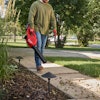
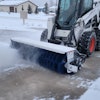
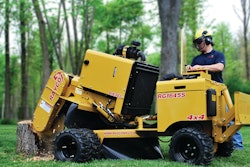
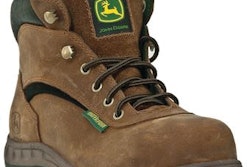
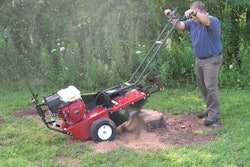
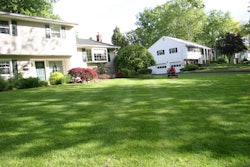



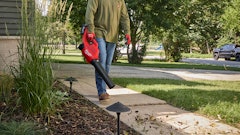
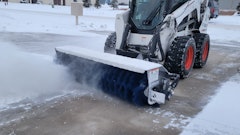
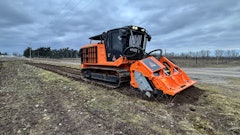



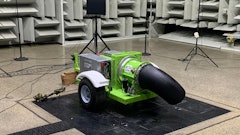


![Greenworks Hybrid Pressure Washer[1]](https://img.greenindustrypros.com/mindful/acbm/workspaces/default/uploads/2025/05/greenworks-hybrid-pressure-washer1.SBGON87qEv.png?ar=16%3A9&auto=format%2Ccompress&fit=crop&h=135&q=70&w=240)